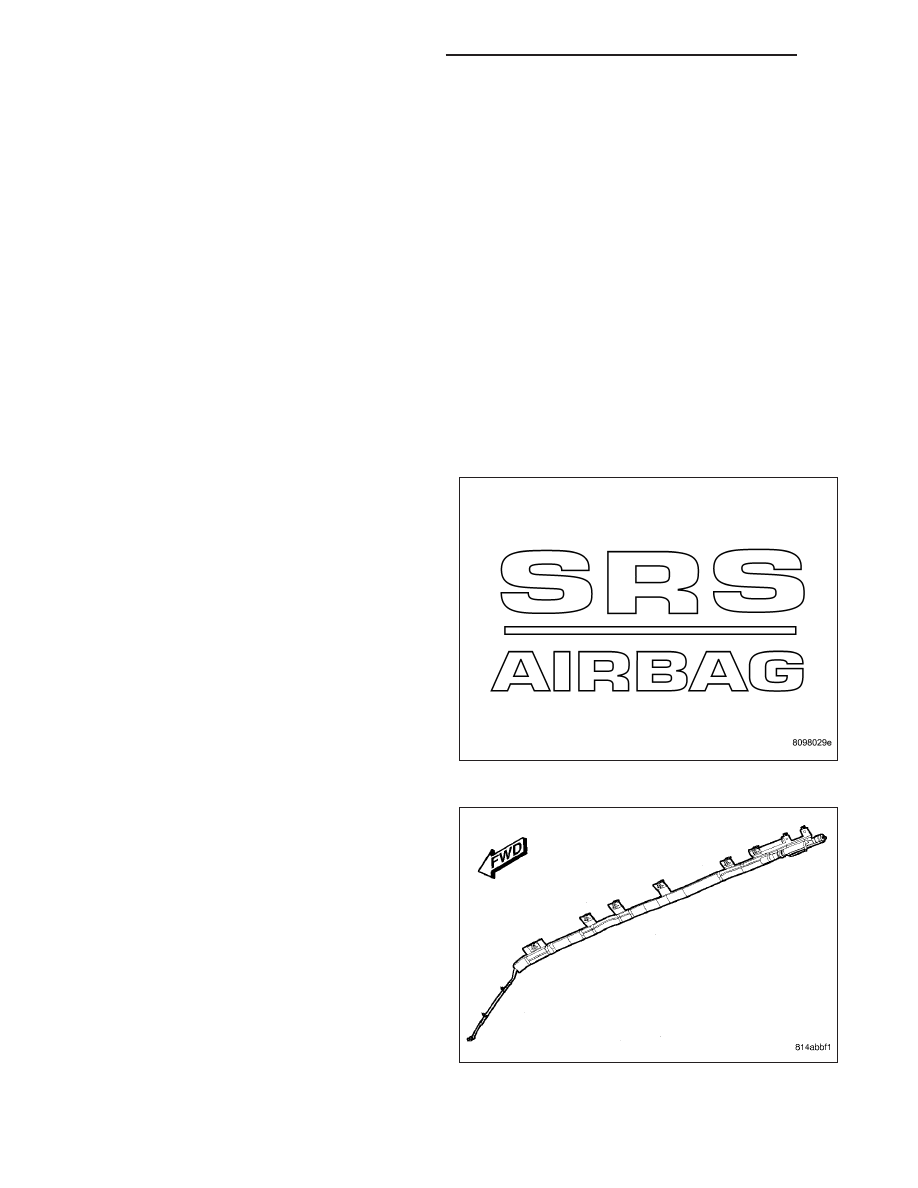Jeep Grand Cherokee WK. Manual - part 655

1. Place the front wheels in the straight-ahead position.
2. Remove the Steering Control Module (SCM) (2) from the steering column. (Refer to 19 - STEERING/COLUMN/
STEERING CONTROL MODULE - REMOVAL).
3. Hold the SCM in one hand so that it is oriented as it would be when it is installed on the steering column.
4. Use your other hand to rotate the clockspring rotor (1) clockwise to the end of its travel. Do not apply excessive
torque.
5. From the end of the clockwise travel, rotate the rotor about two and one-half turns counterclockwise. The clock-
spring airbag pigtail wires and connector receptacles should be at the top and the holes for the clockspring lock-
ing pin (3) should be in alignment.
6. The clockspring is now centered. Secure the clockspring rotor to the SCM case to maintain clockspring centering
until the SCM is reinstalled on the steering column.
7. The front wheels should still be in the straight-ahead position. Reinstall the SCM onto the steering column. (Refer
to 19 - STEERING/COLUMN/STEERING CONTROL MODULE - INSTALLATION).
CURTAIN AIRBAG
DESCRIPTION
Optional side curtain airbags are available for this
model when it is also equipped with dual front airbags.
These airbags are passive, inflatable, Supplemental
Restraint System (SRS) components, and vehicles
with this equipment can be readily identified by a
molded identification trim button with the “SRS - AIR-
BAG” logo located on the headliner above each B-pil-
lar. This system is designed to reduce injuries to the
vehicle occupants in the event of a side impact
collision.
Vehicles equipped with side curtain airbags have two
individually controlled curtain airbag units. These air-
bag units are concealed and mounted above the
headliner where they are each secured to one of the
roof side rails. Each folded airbag cushion is con-
tained within a long extruded plastic channel that
extends along the roof rail from the A-pillar at the front
of the vehicle to just behind the C-pillar at the rear of
the vehicle. A long tether extends down the A-pillar
from the front of the airbag cushion. The end of the
tether is secured to a slot in the sheet metal with a
metal hook, while two additional plastic clips secure
the tether to the inside of the A-pillar.
The hybrid-type inflator for each airbag is secured to the roof rail at the rear of the airbag unit between the C-pillar
and the D-pillar, and is connected to the airbag cushion by a long tubular manifold. The inflator bracket and the
extruded airbag cushion channel are secured with both plastic push-in fasteners and screws to the roof rail. The
8O - 442
RESTRAINTS - SERVICE INFORMATION
WK